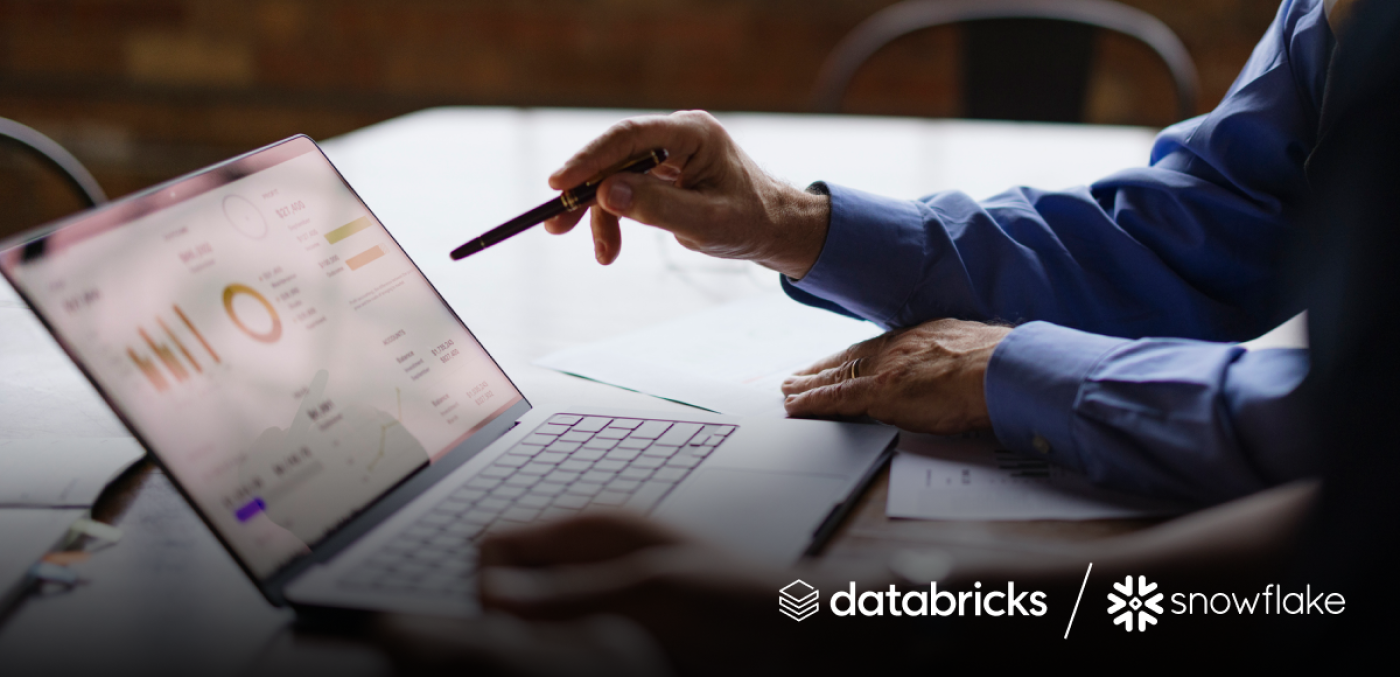The abundance of new data in the world and the need for data-related services are increasing in this AI era.8 Two of the leading data platforms supporting this demand are Databricks and Snowflake. Although they have their different strengths and focuses, both Databricks and Snowflake compete in several areas, namely helping other companies store, analyze, and leverage data, including for AI use cases.9,10
While both companies started around the same time11 and are worth tens of billions of dollars,12,13 a key difference is that Snowflake went public in 2020,14 while Databricks remains a private company. That said, Databricks is a potential IPO candidate, with its CEO noting in December 2024 that a Databricks IPO could come in 2025 or 2026, and ultimately, the majority of the company's life will be as a public company, he said.15
Helping companies do more with their data
At their cores, both Databricks and Snowflake aim to help companies manage and extract more value from their data. Data quantity matters in many cases, but the quality aspect depends on more than just the data source; companies also need to be able to store and access their data for analysis and integrations with other tools.
However, Databricks and Snowflake have approached this issue a bit differently. Snowflake, founded in 2012,16 was built as a proprietary cloud-based data warehouse platform.17 Traditionally, Snowflake has been used more so for business intelligence (BI) purposes, with companies utilizing its powerful SQL query capabilities to analyze large datasets.18
In comparison, Databricks, founded in 2013,19 is built on top of the open-source Apache Spark™,20 and it has traditionally been used more for purposes like data science collaboration and running machine learning models.21 The company has also expanded into what has become a central offering, which it calls a lakehouse, combining features of data lakes and data warehouses.22
In recent years, there's been more convergence between the companies in terms of Databricks offering more warehousing capabilities like Snowflake has traditionally done, while Snowflake has focused more on supporting AI and analytics, which is more Databricks' background.23
That convergence has included several notable acquisitions to add capabilities to their respective platforms. For example, in 2024, Databricks acquired data management company Tabular for a reported $2 billion, which Snowflake also reportedly tried to buy.24 Later that year, Snowflake acquired another data management company, Datavolo, for an undisclosed amount, to help support generative AI use cases.25
Both companies also recently made acquisitions to help offer AI agents, with Snowflake buying Crunchy Data for around $250 million, and Databricks buying Neon for approximately $1 billion.26
Amidst this competition, Databricks has largely closed the gap on Snowflake in terms of revenue, though as a private company, data on Databricks' financials is more limited. From about mid-2023 to mid-2024, Databricks' annual revenue jumped from $1.5 billion to $2.4 billion.27 The company now says it's on track for annualized revenue to reach $3.7 billion by July.28
In comparison, Snowflake closed the fiscal year ended January 31, 2024, at around $2.7 billion,29 and it closed the following fiscal year spanning most of 2024 at almost $3.5 billion.30 Over the last four quarters ending April 2025, revenue totaled over $3.8 billion.31
Meanwhile, both companies are trying to maintain their status and revenue streams, versus the litany of other AI- and data-related private market companies that are attempting to gain market share in this realm.
For example, SambaNova Systems provides more of a holistic AI platform across hardware, software, and AI models. In some sense, SambaNova is complementary to either Databricks or Snowflake, as users could manage their data with Databricks’ or Snowflake’s platform and then use SambaNova to run AI models. Still, there could be some competition, such as if Databricks and Snowflake move more into offering their own AI models.
Another AI-related unicorn of note is Dataminr. While Dataminr offers a more specific AI-powered risk-detection system, there could be some competition with Databricks and Snowflake. Organizations may weigh whether to build their own tools with the data stored on Databricks or Snowflake vs. going with more of an off-the-shelf solution like Dataminr.
SandboxAQ is another rising AI upstart. Spun out of Alphabet in 2022,32 SandboxAQ differentiates itself by using large quantitative models (LQMs) instead of LLMs to solve challenges in areas like healthcare and cybersecurity. LQMs are based on structured data and physical or mathematical models rather than unstructured data, so they’re often used for more scientific contexts. So, that could provide some competition with Databricks and Snowflake as organizations decide which types of models to prioritize.
DataRobot is also a powerful AI platform that more directly competes with Databricks and Snowflake than some other AI companies. However, DataRobot is more of an automated machine learning platform that generally requires less technical knowledge to run predictive models. In contrast, Databricks and Snowflake generally allow for more customization and control over how organizations develop their analytics processes, whether that’s for predictive modeling or a historical analysis.
Similarly, ThoughtSpot is a popular AI-powered business intelligence tool, used to review past and present data, while also having some predictive analytics capabilities. So, like with these other above-mentioned AI platforms, organizations may weigh whether they want more of the out-of-the-box solution or build something on their own with Databricks or Snowflake.
Comparing market performance
Snowflake started off hot with its IPO in 2020 — the largest software IPO ever — pricing its shares at $120 but closing the first day of trading at more than twice that level, at $253.93 per share.33
However, the stock took a steep stumble in 2022 amidst a broader market downturn, falling by more than two-thirds from its late 2021 high. While it then staged a substantial recovery, reaching above $230 per share in early 2024, the stock slipped again in 2024, falling to around 70% below all-time highs in late 2024.34 In recent months, though, Snowflake has again staged a comeback, nearly doubling its stock price to over $269, with a current market cap of over $92 billion.35
In comparison, Databricks, as a private company, has not experienced the same stock price swings as distinctly. That said, its $37.9 billion valuation from its Series H in August 2021, followed by a modest increase to $43.4 billion with its Series I in September 2023, suggests that Databricks may have skipped some of the more notable hardships of 2022, but that showed up in terms of not growing in valuation as quickly as it had in other primary funding rounds. By the end of 2024, for example, another funding round increased its valuation by around 43% to approximately $62 billion. That has only accelerated in recent months amidst an AI boom. Databricks raised $1.13 billion in September 2025 at a $100 billion valuation, thereby overtaking Snowflake’s valuation.36
When directly comparing Databricks vs. Snowflake, dating back to the beginning of 2024, Databricks' Forge Price has gained over 146%,37 while Snowflake is up over 34% — still relatively strong gains, but not enough to match Databricks’ explosive growth.38 With that, Databricks' Forge Price valuation sits at $121 billion as of October 28, 202539 vs. about a $92 billion market cap for Snowflake.40
Forge Price is a derived data point that reflects the up-to-date price performance of venture-backed, late-stage companies, and is calculated based on a proprietary model incorporating pricing inputs from primary funding round information, secondary market transactions, and indications of interest (IOIs) on Forge.
Forge + Yahoo Finance Data: A new lens on public vs. private stocks
Thanks to the partnership between Forge and Yahoo Finance announced earlier this year, investors can now closely monitor real-time private company prices like Databricks' Forge Price vs. data platform competitors like Snowflake. These side-by-side comparisons could help investors spotlight changes that might occur as both companies navigate changing technologies and the overall economic landscape.
What's next for Databricks vs. Snowflake?
Both Databricks and Snowflake have been focusing on AI capabilities lately,41,42 and the ways companies decide to implement AI in the future could affect how they use these types of data platforms. Both companies have not been shy about making acquisitions, as mentioned, so it's possible that future deals will expand what Databricks and Snowflake offer too.
A potential Databricks IPO also remains on the table, and if that occurs, that could affect the market performance of both companies, not just from a customer perspective but in terms of how investors decide to allocate to these stocks.
For now, as it remains private, interested investors can learn more about how to invest in Databricks pre-IPO. Those looking to buy shares of Databricks, or other AI companies, should also read Forge’s buyer’s guide to investing in private market shares.
Finally, if you’re ready to start trading, you can create an account today to buy and sell shares.




